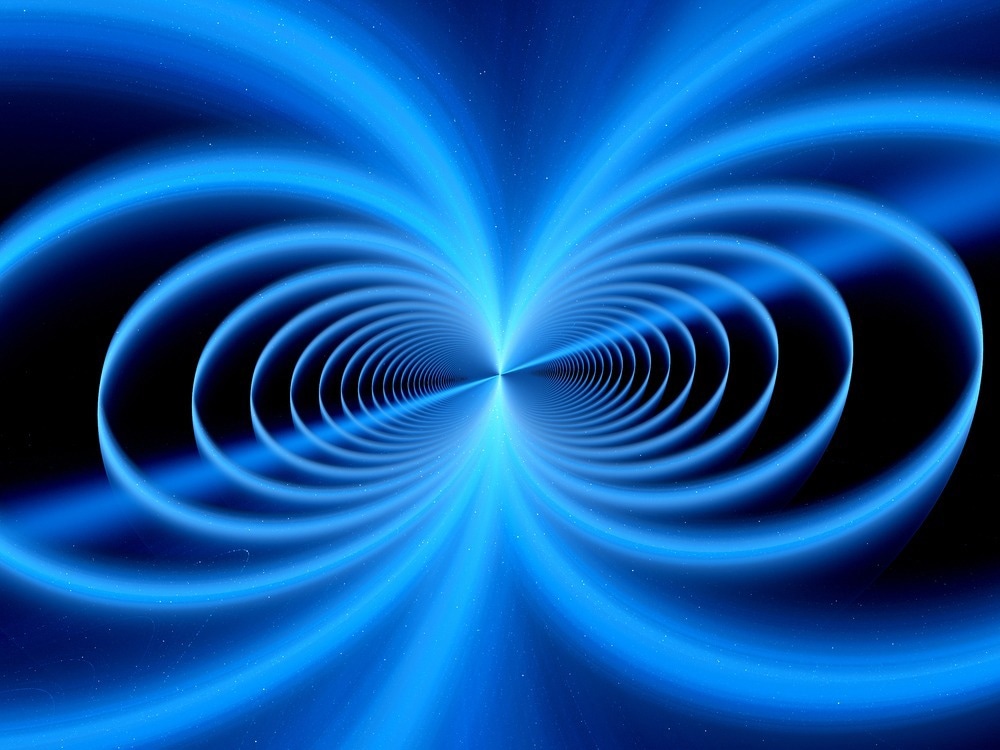A magnetic sensor is a device that translates the magnitude and fluctuations of magnetic flux into electric impulses. Magnetic sensors are used in various industrial applications, including linear, angular displacement, and rotation sensing.

Image Credit: sakkmesterke/Shutterstock.com
What are Magnetic Sensors?
Magnetic sensors measure magnetic fields in terms of flux, intensity, and direction. For several years, magnetic field sensing has been crucial in many industries.
Magnetic sensor readings (changes and variations in the magnetic field) may be used to monitor item locations, directions, revolutions, and angles, the existence of an electric current, and so on. As a result, magnetic sensors are used in many applications such as automotive, military, robots, medical equipment, space equipment, geoscience, and industrial measurements.
Types of Magnetic Sensors
Several magnetic sensors such as Hall Effect sensors, perovskite magneto resistors, fluxgate sensors, anisotropic magneto resistive (AMR) sensors, and inductive magnetometers have been produced. Hall Effect sensors are among the most extensively used sensors for sensing magnetic fields.
However, anisotropic magneto resistive (AMR) detectors with embedded switching and feedback coils have recently become typical off-the-shelf components for use in medium-accuracy technologies such as digital device compasses. AMR detectors have 100 times the field accuracy of Hall Effect sensors of the same dimensions and power usage.
Working Principle of Magnetic Sensors
The magnetic sensor is made up of a chip with a magneto resistive component for detecting magnetic vectors and a magnet for magnetic vector biasing that can be recognized by the magneto resistive component.
The chip utilized in the sensor may be used to detect changes in the magnetic vector. This vector observes the activity of a magnetic body as the electrical resistance of the magneto resistive component changes.
When the electromagnetic vector biasing occurs due to the magnet cooperating with the magnetic body, it brings a motion within the sensor chip. The sensor may be used to enable compass functionality in the Navigation menu.
Soft magnetic materials play an important role in a broad range of sensors that monitor magnetic properties, electric currents, displacements, and mechanical forces. The most popular soft magnetic materials utilized in producing magnetic sensors include crystalline, nanocrystals, and polymorphic soft magnetic compounds such as nickel-iron and nickel-cobalt alloys.
Magnetic Sensors: Advantages and Limitations
Magnetic sensors' key benefits are their cheap cost and robustness. Magnetic force lines are not intercepted by plastic, aluminum, copper, or other nonmagnetic materials and flow through to the other side. Magnetic sensors may take advantage of these properties to detect objects.
Furthermore, they may be employed for a variety of sensor tasks such as location detecting, speed measuring, and movement direction sensing.
At the same time, external ferromagnetic interference might affect a magnetic field existing in a magnetic sensor. Because of this vulnerability to stray magnetic fields, measurement accuracy may suffer.
Magnetic sensors cannot measure current flow at distances greater than 10 cm. The only way to solve this problem is to utilize an extremely powerful magnet capable of producing a large magnetic field.
High temperatures can have an impact on magnetic sensing capabilities, influencing the mobility of the charge carrier as well as the sensitivity of Hall Effect sensors.
Applications of Magnetic Sensors
Magnetic sensors are extremely helpful in a wide range of sectors. They may be grouped into magnetic field detectors, magnetic positioning and range sensors, magnetic proximity switches, magnetic force, torque detectors, magnetic flowmeters, and current sensors.
Magnetic sensors' primary use is position measurement. Most magnetic sensors for positional measurement are built around a Hall Effect sensor and a tiny permanent magnet.
Another major area of industrial expansion is robotics and the use of robots for manufacturing automation. Magnetic sensors, particularly linear and angular position sensors, play an important role in keeping production processes working properly. Magnets are employed to assess the precision and accuracy of the robots' motor motions.
Adaptable electronics have resulted in unique applications in the sectors of healthcare, recreation, and home appliances in recent years. As a result, a healthy and fast-rising market emerged, predicted to be worth $7.6 billion by 2027. In this context, the production of flexible magnetic sensors is appealing for financial reasons and opens up new application areas.
Future Outlook
The worldwide magnetic sensor market is expected to develop at a compound annual growth rate (CAGR) of 5.1 percent between 2022 and 2028, up from a CAGR of 4.0 percent between 2013 and 2021.
Increasing demand for Hall Effect sensors, 3D magnetic detectors, and magneto resistive sensor systems across a variety of industries is expected to fuel attractive growth opportunities in the worldwide magnetic sensor market.
The production of flexible magnetic sensors is appealing both commercially and in terms of allowing new application areas. Future research should concentrate on improving flexible and adaptable magnetic sensors to improve their industrial applications.
References and Further Reading
Gurusamy, V. et al. (2022). Recent Trends in Magnetic Sensors and Flux Based Condition Monitoring of Electromagnetic Devices. IEEE Transactions on Industry Applications. p.1. Available at: https://doi.org/10.1109/TIA.2022.3174804.
Hao, Y. et al. (2022). A Review of Smart Materials for the Boost of Soft Actuators, Soft Sensors, and Robotics Applications. Chinese Journal of Mechanical Engineering, 35, p. 37. Available at: https://doi.org/10.1186/s10033-022-00707-2
Khan, M. A. et al. (2021). Magnetic sensors-A review and recent technologies. Engineering Research Express, 3, p. 2. Available at: https://doi.org/10.1088/2631-8695/ac0838
Li, Y. et al. (2020). The progress of magnetic sensor applied in biomedicine: A review of non-invasive techniques and sensors. Journal of the Chinese Chemical Society, 68(2), pp. 216-227. Available at: https://doi.org/10.1002/jccs.202000353
Disclaimer: The views expressed here are those of the author expressed in their private capacity and do not necessarily represent the views of AZoM.com Limited T/A AZoNetwork the owner and operator of this website. This disclaimer forms part of the Terms and conditions of use of this website.